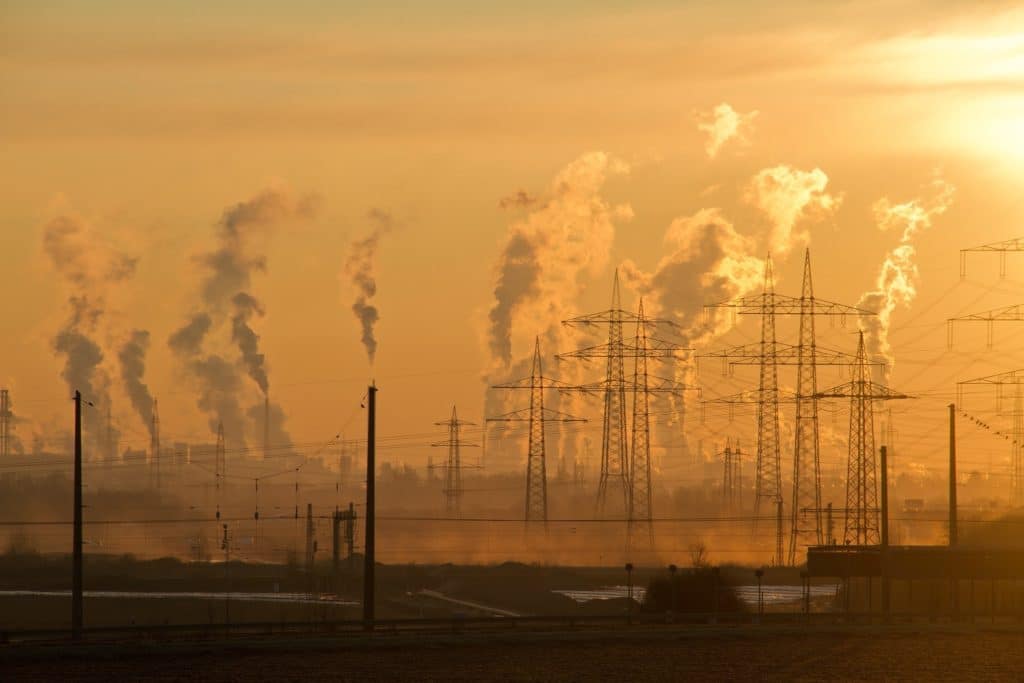While some people still affirm that climate change is not happening, here are some reality checks.
CO2 levels in the atmosphere have increased exponentially since the industrial revolution and the impact on our health is devastating.

Climate change is already considered one of the most serious threats to the health care industry. Heatwaves, floods, and droughts have direct short-term impacts but climate change, rising CO2 levels, and air pollution also affect people in the longer term.
While me think that the air we breathe only affect our lungs, air pollutants can penetrate our lungs, be carried through the body and cause inflammation potentially in every single organ. Air pollution can harm acutely, usually manifested by respiratory or cardiac symptoms, as well as chronically.
“Those inflammatory proteins spread into the body, affecting the brain, the kidneys, the pancreas and so forth. In evolutionary terms, the body has evolved to defend itself against infections, not pollution.”
Prof. Dean Schraufnagel of the University of Illinois.
Air pollution is a public health emergency with more than 90% of the global population breathing toxic outdoor air. Climate change is the greatest public health threat of the century; with more than 8,000,000 (yes, 8 million!) early deaths each year, making it a bigger killer than tobacco smoking and the 5th leading risk factor for death in the world.
Already, there are more than 70,000 scientific papers that demonstrate how air pollution is affecting our health. According to the WHO, air pollution is called the “silent killer” and has no mercy as it affects all regions, ages, and social groups.
Lungs and heart
Air pollution can cause from asthma to emphysema and lung cancer, as well as being the leading cause for heart attacks.
Brain and mind
Science also showed that air pollution can reach the brain causing strokes, dementia, reduced intelligence, and poor sleep as a result of systemic inflammation.
Abdominal organs
The liver is one of the target organs as these are toxic particles that the body needs to detoxify, and that’s the liver’s job.
They are also carried by the bloodstream to the bladder and can also reach the gut, where an increase in irritable bowel syndrome.
Air pollutants can even affect the skin and bones causing various health issues.
Fertility & Reproduction
Air pollution can affect fertility and cause reproductive problems as it increases the risk of miscarriages, reduced fetal growth, low birth weight, preterm delivery, preeclampsia, spontaneous abortions, and even low sperm quality.
Exposure in the first trimester poses a greater risk as it causes intrauterine inflammation.
These adverse effects are independent and additive to other risk factors such as lower socioeconomic status, diabetes, hypertension, and smoking.
Children
Children breathe more air per unit of body weight and are biologically more susceptible to pollution because their bodies are still not mature.
Exposure to air pollutants during the prenatal period and childhood can have harmful and irreversible effects to the lungs and other organs.
Air pollution increases child mortality, respiratory infections, childhood obesity, leukemia, and mental health issues.
Who is vulnerable to air pollution?
Air pollution affects all regions, ages, and social groups.
The most important is the level of exposure. People of low social and economic status often have higher exposure to air pollution.
Young and old people have an increased risk, as well as those with preexisting health conditions, pregnant women, genetic predisposition, smokers, and obese people.
Noteworthy is the cumulative impact of environmental and social stressors. Psychosocial stress also interacts with polluted air exposure to increase the risk of disease.
Some interesting facts!
Air pollution even decreases exercise performance; however, the health benefits of exercise outweigh the adverse effects of pollution.
Also, sleep efficiency is decreased in more polluted areas, as it causes sleep apnea, asthma, COPD, or other respiratory or chronic diseases, as well as inflammation of the central nervous system. In addition, more polluted areas are also often noisy and illuminated.
Air pollution directly affects climate change as it’s the main contributor to greenhouse gas emissions and global warming. In this context, the effect of extreme weather on food production is estimated to decrease 5-25% the crop yields across the Mediterranean region in the coming decades.
It’s anticipated the spread of infectious diseases in developed countries as temperatures rise and increase the range of mosquitoes that transmit, for example, dengue fever.
Food poisoning and other infections could also rise, as bacteria thrive in warmer conditions.
What is the solution?
We need to help reduce greenhouse gas emissions, as much and as fast as possible, and help mitigate the inevitable damage that will follow. Environmental catastrophes and healthcare crisis are inevitable as the climate warms and will become even more frequent if we do not take immediate action.
We need to change our mindset to prioritize preventing disease rather than curing it.
Climate breakdown is an immediate health threat, not a distant environmental inconvenience.




